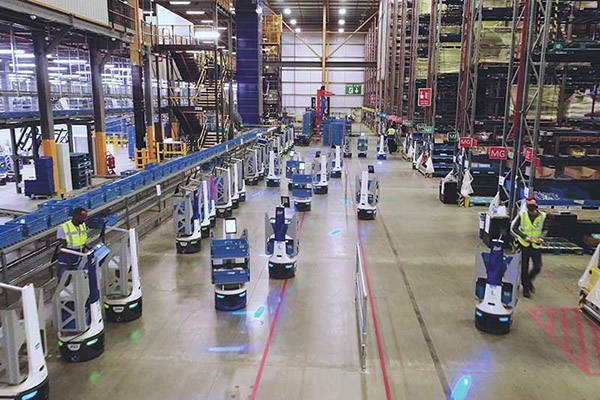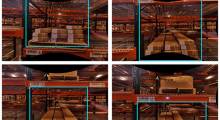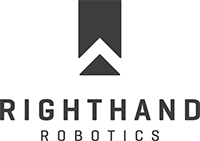Much of the excitement in warehouse robotics is about what the systems can do next, such as trailer unloading, parcel piece picking, or autonomous case handling. But there is also plenty of enthusiasm about the robotics-as-a-service, or RaaS, model for adopting automation.
Like the established software-as-a-service (SaaS) model, RaaS bundles the costs of running a system into a tidy regular fee. That moves capital investments in warehouse robotics into the realm of operational expenses or “opex.” The advantages cascade from there, from opening up solutions to a wider base of users to making it easier to scale fleets, say industry observers.
The model is catching on, with some vendors having focused on it for years. For example, autonomous mobile robot (AMR) provider Locus Robotics uses RaaS for all its offerings.
Other AMR vendors also lead with RaaS, and analysts predict strong growth. The RaaS market could grow from $1.33 billion in 2023 to $4.12 billion by 2030, expanding at a compound annual growth rate (CAGR) of 17.5%, according to a report from Grandview Research.
The RaaS trend involves more than mobile robots. Vendors of smart picking robots may offer RaaS, as do some providers of automated storage and retrieval systems (ASRS). In short, RaaS or lease-based opex models aren’t just for AMRs; it is also a way to bring in other systems.
There are nuances to RaaS. Some vendors say flexible leasing can accomplish the same core benefit of removing upfront costs. Others point out that the ultimate evolution of RaaS will incorporate performance objectives that incentivize continuous improvement.
Opex appeal
The key to RaaS is that it provides access to solutions without capital outlay, said Joe Couto, executive vice president of robotics and third-party logistics (3PL) at integrator and software provider Körber Business Area Supply Chain.
Couto said that Körber saw this appeal with the RaaS success of its partner Locus Robotics. Since not all its robotics partners offered RaaS, Körber launched an RaaS program of its own.
“We saw from observing the market and what Locus was doing that the model works well,” he recalled. “We felt why not create our own RaaS program and really open the door to a broader market that couldn’t necessarily afford [robots] or that wanted to take the capex route to investing in flexible automation.”
The Körber program taps Locus’s RaaS, but it also can provide other partner systems, said Couto. It can even bundle multiple partner systems into a RaaS program for one customer, add in some software functionality from Körber, or even bundle in automation like put walls or voice.
Robotics can effectively achieve measurable productivity gains, so the ability to move the costs into the opex bucket is an enticing option for companies struggling to find enough people for mostly manual operations, Couto said.
“You’re either going to deploy more people to do the work, or you can deploy some flexible automation to do the work, which you can do under RaaS,” he noted. “That’s quite a bit different than asking someone to write a big check upfront.”
Locus Robotics was a pioneer in RaaS, said Karen Leavitt, the company’s chief marketing officer. She agreed that RaaS can remove barriers to adoption, but said it’s more than spreading out costs.
Each of Locus’s engagements starts with a study called a “concept of operations” that establishes system goals and success metrics, with regular check-ups on progress, Leavitt said.
Locus said its AMRs can work alongside human pickers to make them more effective by enhancing pick density. With about 125 customers and more than 300 sites running its robots, Locus' software platform learns over time from all the work going on. Meanwhile, its RaaS includes support to ensure that customers stay on track toward their goals.
“We’re trying to solve problems our customers are having on the ground tied to the growing volumes of piece handling many operations have,” said Leavitt. “What we say is, ‘OK, you’ve got an opex problem—let’s make it an opex solution.’ You in effect pay a salary to our robots to make your human workers much more effective.”
The model's appeal may depend on industry, said Yasin Guan, chief operating officer of AMR vendor ForwardX Robotics. In manufacturing sectors like automotive, operational volumes tend to be a bit more predictable than in e-commerce or 3PL warehouses, she said.
In addition, capital purchases remain popular in manufacturing, so there often is a capex budget for AMRs, Guan observed. By contrast, fulfillment centers deal with volume peaks and valleys, and so many opt for RaaS.
“They’ll compare the RaaS cost [of AMRs and the productivity they can achieve with AMRs] with trying to hire more associates, and whichever is less costly and more effective, they will go with that,” said Guan.
Leasing as an alternative
In some RaaS programs, the vendor owns the robots, but another approach is leasing or third-party financial companies that offer leasing or “pay-per-pick” agreements that still avoid large upfront costs.
“Today’s leasing options are flexible and customizable,” said Bob Hoffman, senior director of consulting, e-commerce, and retail at Swisslog Americas.
Leasing options extend well beyond traditional capital leasing arrangements and can build in “soft costs” such as software, support, and configuration, he said. In addition, it’s possible to structure a two-tier, pay-per-pick arrangement.
Under this model, a baseline cost for each pick is established based on the expected labor savings from the automation. The first tier covers a minimum yearly pick volume, while the second tier would typically offer a lower per-pick cost for volumes above the base tier, Hoffman explained.
Importantly, leasing can apply to many types of systems, such as an AutoStore ASRS or materials handling automation, he said.
For companies that want to preserve capital but are struggling without the added efficiencies of automation, leasing can be a budget-friendly way of bringing in new systems that deliver the payback the operation needs, added Hoffman.
“Some companies may even be getting to the point of going out of business if they don’t buy automation, but they don’t want to consume capital due to concerns about the economy,” he said. “Leasing gives them an option that can meet their needs and keep them cash-neutral or even cash-positive.”
RaaS and leasing agreements are available for AutoStore solutions, agreef Robert Humphry, vice president of business development and sales at AutoStore integrator SDI Element Logic. He said there are multiple ways to get automation into the opex realm, including RaaS, leasing, or hybrid approaches.
For instance, it’s possible to pay for an AutoStore storage grid as either a capital purchase or a fair-market-value lease. But the warehouse operator could still use a RaaS arrangement for the robotics, software, and support. Or, it could put everything—infrastructure, robotics, software and support—under a pay-per-pick RaaS agreement, Humphry said.
“There is definitely a ton of interest in RaaS,” he stated. “It’s something we’re discussing within every single opportunity we’re working on right now. But RaaS is just one [financing] scenario among others we can offer.”
The capex model remains dominant for acquiring ASRS, but RaaS and leasing hold appeal to smaller enterprises that may have figured that such systems were too big of a leap, said Humphry.
“RaaS essentially democratizes access to these advanced automation systems,” he asserted. “The pay-per-pick nature of that RaaS structure may also better align with the growth and business model changes that end-user organizations are forecasting.”
According to Bendik Førre, chief strategy officer at AutoStore, its pay-per-pick model has drawn strong interest, as have other opex-based models available in its partner ecosystem. While traditional capital purchase remains the prevalent means for acquiring AutoStore solutions, he says, the pay-per-pick model offers multiple advantages, starting with opening access without a big capital budget layout.
Flexible leasing options exist to move many types of warehouse robotics and automation into the opex expense realm.
“Additionally, companies can scale their usage up or down as needed, aligning costs with actual performance requirements,” Førre says. “Lastly, I would say one of the key benefits of such a model is that it encourages a closer alignment of incentives between AutoStore, its distributors and its customers. All parties benefit from system efficiency, maximum uptime and optimal performance.”
Lease arrangements can be made for RightHand Robotics’ intelligent piece-picking solutions, said David Schwebel, RightHand’s head of sales and strategic business development. Much of the interest is coming from smaller organizations and some large enterprises that lease key aspects of their supply chains, he explained.
“In general, you’re seeing more and more customers asking to see the options side by side—what a capital purchase would look like with all ongoing costs like maintenance fees, and they’re comparing that to different RaaS offerings, or other pure or hybrid opex models,” Schwebel said.
He said an RaaS trend to watch is the emergence of models that take a shared-benefits approach to the fee structure. These arrangements closely track the throughput of a system, and when the system exceeds the agreed-upon performance, the user company and vendor share the benefits.
“You can structure a shared performance model in multiple ways,” said Schwebel. “The companies could agree to share in improvement beyond a minimum threshold, at whatever split they agree to—it doesn’t have to be 50/50. The idea is that as the system improves over time, both companies should share in the value of that system improving.”
Schwebel acknowledged that the shared-performance twist on RaaS is still in its infancy, but it is suitable for warehouse robots that use artificial intelligence.
“Solution providers employing AI and machine learning have the strongest opportunity ever in the world of materials handling to keep improving on system efficiency because these platforms are always learning how to do things better,” he said.
RaaS directions
The RaaS trend already shows variety, including pay-per-pick models and leasing, as well as pure RaaS programs where the vendor owns the robots.
Sybmotic recently announced that it is partnering with SoftBank Group on a joint venture called GreenBox to build out a network of automated, multi-tenant distribution centers (DCs). This introduced the concept of “warehouse as a service,” which is more than RaaS in that GreenBox would manage and run these automated DCs for multiple clients as a service.
While many vendors see growing momentum for RaaS, traditional capital purchase has by no means gone away.
“RaaS is definitely emerging, but the majority [of new customer wins] have continued to be capex deals,” said Noah Maynard, vice president of solutions architects at Berkshire Grey.
However, for companies just stepping into advanced technologies, RaaS is attractive because it bundles in support and services—including onsite support if desired, he said.
“With RaaS, there’s no scary new world the user company is entering where they’re going to have to worry about maintaining equipment they haven’t been used to maintaining in the past,” said Maynard. “Remember that the ‘S’ in RaaS stands for 'service,' so those bundled services should be all-encompassing.”
The transition to RaaS has been dramatic for some vendors. Josh Kivenko, chief marketing officer of Vecna Robotics, said that when he joined the company a few years ago, very few of its sales were under RaaS.
Now, more than 90% of Vecna's orders in the past 12 months were in a RaaS model, he said. “Robotics as a service isn’t just what we offer—it’s who we are as a company,” Kivenko said.
An underlying benefit of RaaS is tight mission alignment between vendors and users as to how the automation should perform, he claimed. Specific throughput goals are often built into agreements, such as pallet drops per hour, while Vecna’s team does a dashboard review with clients every couple of weeks, Kivenko said.
All this means RaaS isn’t just a different way to acquire automation; it's shaping up as a different way to manage automation.
“With RaaS, I’ve got to constantly be earning the customer’s business,” Kivenko said. “It’s not a transaction; it’s a relationship. And when that happens, you talk about more workflows, throughput attainment, and how well the system is functioning.”
About the Author
Follow Robotics 24/7 on Linkedin
Article topics
Email Sign Up






















